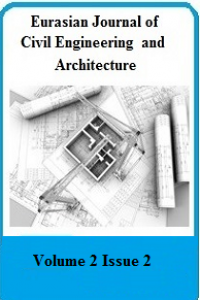Evaluation of the Utilization of Smartphone Applications in Active Probe Vehicle Traffic Data Collection
Abstract
Probe
vehicle data has been widely used as a mean of traffic monitoring, specifically
for travel time, delay and speed measures. Technological developments in the
last decade have increased the availability of technologies and tools used in
probe vehicle data collection. One of the most common methods is obtaining
necessary data from GPS equipped vehicles. Transportation agencies can utilize
fleet data for continuous monitoring of a study area or assign a certain number
of vehicles to perform data collection on a specific corridor/area. However, if
the number of probe vehicles is low, the location accuracy becomes more
critical. The purpose of this study is to evaluate the possibility of using
existing smartphone applications in the market for collecting travel time and
delay data in probe vehicles and compare with high-end GPS product. With this
goal, the study aims to reduce the cost of data collection and test the
accuracy and reliability of limited probe vehicle data. The data has been
collected simultaneously on 102 segments in different speed, density and
environmental conditions on major roadways in Delaware. The mean and variance
of the travel time and delay measures are compared with statistical methods and
the results revealed that there is no significant difference between smartphone
application data and high-end GPS product data for travel time and delay
measures. Therefore, it is emphasized that the smartphones are capable of
collecting probe vehicle data for management and operation of the roadways even
in specific data collections where the number of probe vehicles is limited.
References
- Antoniou, C., Balakrishna, R., & Koutsopoulos, H. N. (2011). A Synthesis of emerging data collection technologies and their impact on traffic management applications. European Transport Research Review, 3(3), 139–148. http://doi.org/10.1007/s12544-011-0058-1
- Choi, K., & Chung, Y. (2002). A Data Fusion Algorithm for Estimating Link Travel Time. Journal of Intelligent Transportation Systems, 7(3–4), 235–260. http://doi.org/10.1080/714040818
- Djuknic, G. M., & Richton, R. E. (2001). Geolocation and assisted GPS. Computers, 34(2), 123–125. http://doi.org/10.1109/2.901174
- Faghri, A., & Hamad, K. (2002). Application of GPS in Traffic Management Systems. GPS Solutions, 5(3), 52–60. http://doi.org/10.1007/PL00012899
- Faouzi, N. E. El, & Klein, L. A. (2016). Data Fusion for ITS: Techniques and Research Needs. In Transportation Research Procedia (Vol. 15, pp. 495–512). Elsevier B.V. http://doi.org/10.1016/j.trpro.2016.06.042
- Faouzi, N. E. El, Leung, H., & Kurian, A. (2011). Data fusion in intelligent transportation systems: Progress and challenges - A survey. Information Fusion, 12(1), 4–10. http://doi.org/10.1016/j.inffus.2010.06.001
- Kaplan, E. D., & Hegarty, C. J. (2006). Understanding GPS: Principles and Applications (2nd ed.). Norwood, MA: Artech House Inc.
- Leduc, G. (2008). Road Traffic Data: Collection Methods and Applications. JRC Technical Notes (Vol. JRC 47967). Luxembourg. Retrieved from http://ftp.jrc.es/EURdoc/EURdoc/JRC47967.TN.pdf
- Trimble Store. (2018). Retrieved March 3, 2018, from https://store.trimble.com/OA_HTML/ibeCCtdMinisites.jsp?language=US
- Turner, S. M. (1996). Advanced techniques for travel time data collection. Transportation Research Record: Journal of the Transportation Research Board, 1551, 51–58. http://doi.org/10.1109/VNIS.1995.518816
- Turner, S. M., Eisele, W. L., Benz, R. J., & Douglas, J. (1998). Travel Time Data Collection Handbook.
Abstract
References
- Antoniou, C., Balakrishna, R., & Koutsopoulos, H. N. (2011). A Synthesis of emerging data collection technologies and their impact on traffic management applications. European Transport Research Review, 3(3), 139–148. http://doi.org/10.1007/s12544-011-0058-1
- Choi, K., & Chung, Y. (2002). A Data Fusion Algorithm for Estimating Link Travel Time. Journal of Intelligent Transportation Systems, 7(3–4), 235–260. http://doi.org/10.1080/714040818
- Djuknic, G. M., & Richton, R. E. (2001). Geolocation and assisted GPS. Computers, 34(2), 123–125. http://doi.org/10.1109/2.901174
- Faghri, A., & Hamad, K. (2002). Application of GPS in Traffic Management Systems. GPS Solutions, 5(3), 52–60. http://doi.org/10.1007/PL00012899
- Faouzi, N. E. El, & Klein, L. A. (2016). Data Fusion for ITS: Techniques and Research Needs. In Transportation Research Procedia (Vol. 15, pp. 495–512). Elsevier B.V. http://doi.org/10.1016/j.trpro.2016.06.042
- Faouzi, N. E. El, Leung, H., & Kurian, A. (2011). Data fusion in intelligent transportation systems: Progress and challenges - A survey. Information Fusion, 12(1), 4–10. http://doi.org/10.1016/j.inffus.2010.06.001
- Kaplan, E. D., & Hegarty, C. J. (2006). Understanding GPS: Principles and Applications (2nd ed.). Norwood, MA: Artech House Inc.
- Leduc, G. (2008). Road Traffic Data: Collection Methods and Applications. JRC Technical Notes (Vol. JRC 47967). Luxembourg. Retrieved from http://ftp.jrc.es/EURdoc/EURdoc/JRC47967.TN.pdf
- Trimble Store. (2018). Retrieved March 3, 2018, from https://store.trimble.com/OA_HTML/ibeCCtdMinisites.jsp?language=US
- Turner, S. M. (1996). Advanced techniques for travel time data collection. Transportation Research Record: Journal of the Transportation Research Board, 1551, 51–58. http://doi.org/10.1109/VNIS.1995.518816
- Turner, S. M., Eisele, W. L., Benz, R. J., & Douglas, J. (1998). Travel Time Data Collection Handbook.
Details
| Primary Language | English |
|---|---|
| Subjects | Civil Engineering |
| Journal Section | Articles |
| Authors | |
| Publication Date | December 1, 2018 |
| Published in Issue | Year 2018 Volume: 2 Issue: 2 |
Cite
Creative Commons License
Attribution-NonCommercial-ShareAlike 4.0 International (CC BY-NC-SA 4.0)

Creative Commons Attribution-NonCommercial-ShareAlike (CC BY-NC-SA) License lets others remix, tweak, and build upon the work non-commercially, as long as they credit the author(s) and license their new creations under the identical terms.


